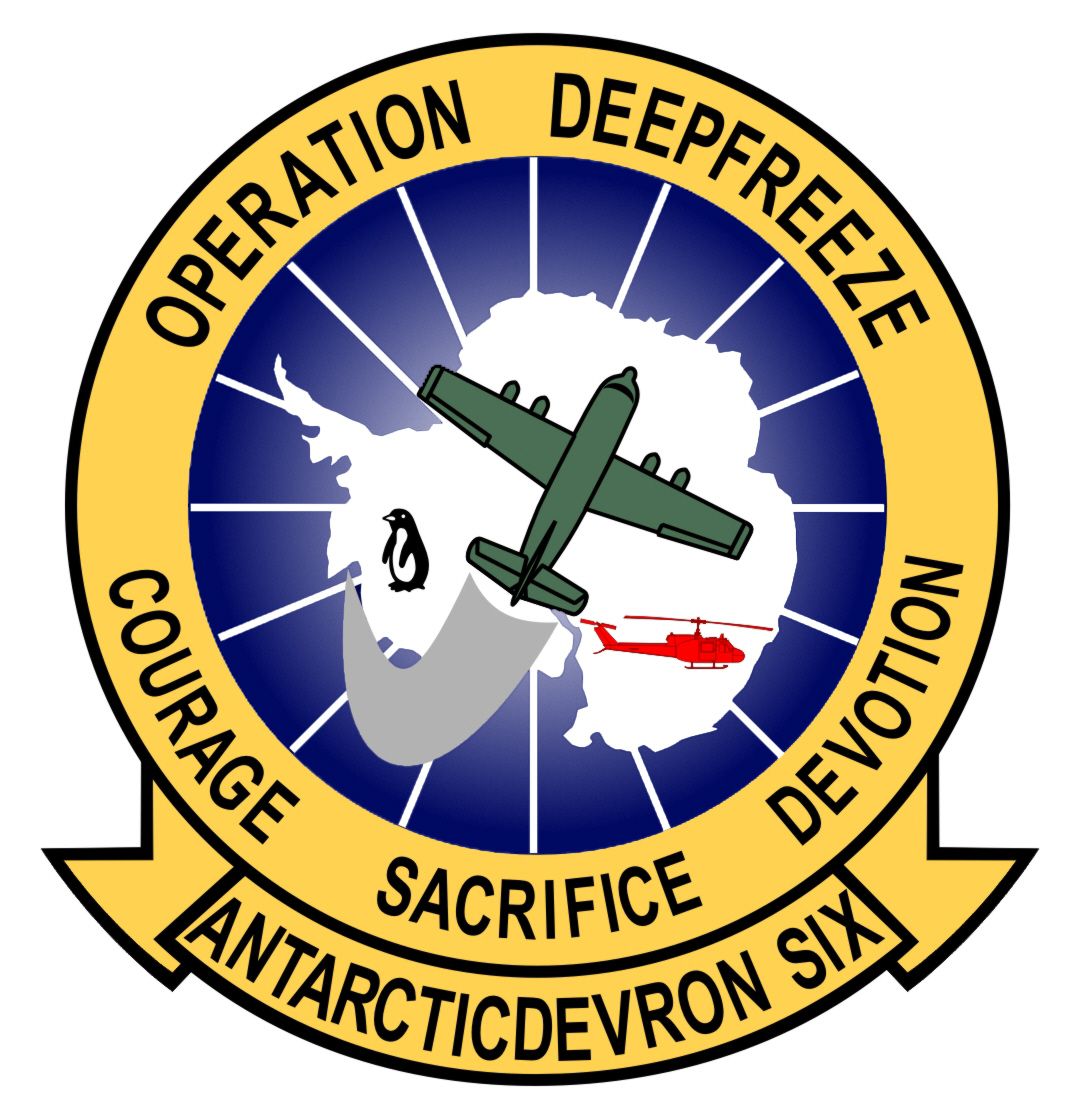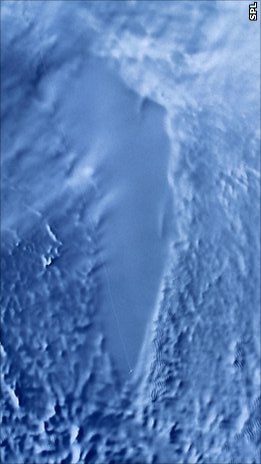|
South Pole–Queen Maud Land Traverse
The South Pole–Queen Maud Land Traverse (SPQMLT) was a three-part scientific exploration of Antarctica undertaken by the United States in the 1960s. The three parts, referred to individually as South Pole–Queen Maud Land Traverse I, II, and III (SPQMLT-1, -2, and -3), traveled a zigzag route across nearly 4200 km of the Antarctic Plateau in the austral summers of 1964–1965, 1965–1966, and 1967–1968. The participants included scientists from Belgium, Norway, and the United States. Their objectives included determining the thickness of the Antarctic Ice Sheet, the elevation and slope of its surface, the rate of ice accumulation, and the subglacial topography. Other objectives included measuring the density and temperature of the ice at depth, measuring the geomagnetic field and gravity, and obtaining snow samples and ice cores. Operations The traverse parties consisted of two to three traverse engineers and seven to eight scientists, who were affiliated with The Ohio ... [...More Info...] [...Related Items...] OR: [Wikipedia] [Google] [Baidu] |
Operation Deep Freeze
Operation Deep Freeze is the code name for a series of United States missions to Antarctica, beginning with "Operation Deep Freeze I" in 1955–56, followed by "Operation Deep Freeze II", "Operation Deep Freeze III", and so on. (There was an initial operation before Richard E. Byrd, Admiral Richard Byrd proposed 'Deep Freeze'). Given the continuing and constant US presence in Antarctica since that date, "Operation Deep Freeze" has come to be used as a general term for US operations in that continent, and in particular for the regular missions to resupply US Antarctic bases, coordinated by the Military of the United States, United States military. Task Force 199 was involved. For a few decades the missions were led by the United States Navy, though the Air National Guard and National Science Foundation are also important parts of the missions. In Antarctica, when the polar dawn starts late in the year things begin warming up and the mission usually runs from late in the year to ear ... [...More Info...] [...Related Items...] OR: [Wikipedia] [Google] [Baidu] |
Cirrus Cloud
Cirrus ( cloud classification symbol: Ci) is a genus of high cloud made of ice crystals. Cirrus clouds typically appear delicate and wispy with white strands. In the Earth's atmosphere, cirrus are usually formed when warm, dry air rises, causing water vapor deposition onto mineral dust and metallic particles at high altitudes. Globally, they form anywhere between above sea level, with the higher elevations usually in the tropics and the lower elevations in more polar regions. Cirrus clouds can form from the tops of thunderstorms and tropical cyclones and sometimes predict the arrival of rain or storms. Although they are a sign that rain and maybe storms are on the way, cirrus themselves drop no more than falling streaks of ice crystals. These crystals dissipate, melt, and evaporate as they fall through warmer and drier air and never reach ground. The word ''cirrus'' comes from the Latin prefix ''cirro-'', meaning "tendril" or "curl". Cirrus clouds warm the earth, potentially c ... [...More Info...] [...Related Items...] OR: [Wikipedia] [Google] [Baidu] |
Sastrugi
Sastrugi, or zastrugi, are features formed by the erosion of snow by wind. They are found in polar regions, and in snowy, wind-swept areas of temperate regions, such as frozen lakes or mountain ridges. Sastrugi are distinguished by upwind-facing points, resembling anvils, which move downwind as the surface erodes. These points usually lie along ridges parallel to the prevailing wind; they are steep on the windward side and sloping to the leeward side. Smaller irregularities of this type are known as ripples (small, ~10 mm high) or wind ridges. Large sastrugi are troublesome to skiers and snowboarders. Traveling on the irregular surface of sastrugi can be very tiring and can risk breaking equipment; ripples and waves are often undercut, and the surface is hard and unforgiving, with constant minor topographic changes between ridge and trough. Etymology The words ''sastrugi'' and ''zastrugi'' are Russian-language plurals; the singular is ''zastruga''. The form ''sastruga'' ... [...More Info...] [...Related Items...] OR: [Wikipedia] [Google] [Baidu] |
Pole Of Inaccessibility
In geography, a pole of inaccessibility is the farthest (or most difficult to reach) location in a given landmass, sea, or other topographical feature, starting from a given boundary, relative to a given criterion. A geographical criterion of inaccessibility marks a location that is the most challenging to reach according to that criterion. Often it refers to the most distant point from the coastline, implying the farthest point into a landmass from the shore, or the farthest point into a body of water from the shore. In these cases, a pole of inaccessibility is the center of a maximally large circle that can be drawn within an area of interest only touching but not crossing a coastline. Where a coast is imprecisely defined, the pole will be similarly imprecise. Northern pole of inaccessibility The northern pole of inaccessibility, sometimes known as the Arctic pole, is located on the Arctic Ocean pack ice at a distance farthest from any landmass. The original position was wro ... [...More Info...] [...Related Items...] OR: [Wikipedia] [Google] [Baidu] |
Amundsen–Scott South Pole Station
The Amundsen–Scott South Pole Station is a science and technology in the United States, United States scientific research station at the South Pole of the Earth. It is the List of extreme points of the United States, southernmost point under the jurisdiction (not sovereignty) of the United States. The station is located on the high Antarctic Plateau, plateau of Antarctica at above sea level. It is administered by the Office of Polar Programs of the National Science Foundation, specifically the United States Antarctic Program (USAP). It is named in honor of Norwegian Roald Amundsen and Briton Robert Falcon Scott, Robert F. Scott, leaders of the competing first and second expeditions to reach the pole, in the summer of 1911–1912. The original Amundsen–Scott Station was built by Seabee, Navy Seabees for the federal government of the United States during November 1956, as part of its commitment to the Science, scientific goals of the International Geophysical Year, an ef ... [...More Info...] [...Related Items...] OR: [Wikipedia] [Google] [Baidu] |
Celestial Navigation
Celestial navigation, also known as astronavigation, is the practice of position fixing using stars and other celestial bodies that enables a navigator to accurately determine their actual current physical position in space or on the surface of the Earth without relying solely on estimated positional calculations, commonly known as dead reckoning. Celestial navigation is performed without using satellite navigation or other similar modern electronic or digital positioning means. Celestial navigation uses "sights," or timed angular measurements, taken typically between a celestial body (e.g., the Sun, the Moon, a planet, or a star) and the visible horizon. Celestial navigation can also take advantage of measurements between celestial bodies without reference to the Earth's horizon, such as when the Moon and other selected bodies are used in the practice called "lunars" or the Lunar distance (navigation), lunar distance method, used for determining precise time when time is u ... [...More Info...] [...Related Items...] OR: [Wikipedia] [Google] [Baidu] |
Azimuth
An azimuth (; from ) is the horizontal angle from a cardinal direction, most commonly north, in a local or observer-centric spherical coordinate system. Mathematically, the relative position vector from an observer ( origin) to a point of interest is projected perpendicularly onto a reference plane (the horizontal plane); the angle between the projected vector and a reference vector on the reference plane is called the azimuth. When used as a celestial coordinate, the azimuth is the horizontal direction of a star or other astronomical object in the sky. The star is the point of interest, the reference plane is the local area (e.g. a circular area with a 5 km radius at sea level) around an observer on Earth's surface, and the reference vector points to true north. The azimuth is the angle between the north vector and the star's vector on the horizontal plane. Azimuth is usually measured in degrees (°), in the positive range 0° to 360° or in the signed ... [...More Info...] [...Related Items...] OR: [Wikipedia] [Google] [Baidu] |
Longitude
Longitude (, ) is a geographic coordinate that specifies the east- west position of a point on the surface of the Earth, or another celestial body. It is an angular measurement, usually expressed in degrees and denoted by the Greek letter lambda (λ). Meridians are imaginary semicircular lines running from pole to pole that connect points with the same longitude. The prime meridian defines 0° longitude; by convention the International Reference Meridian for the Earth passes near the Royal Observatory in Greenwich, south-east London on the island of Great Britain. Positive longitudes are east of the prime meridian, and negative ones are west. Because of the Earth's rotation, there is a close connection between longitude and time measurement. Scientifically precise local time varies with longitude: a difference of 15° longitude corresponds to a one-hour difference in local time, due to the differing position in relation to the Sun. Comparing local time to an absol ... [...More Info...] [...Related Items...] OR: [Wikipedia] [Google] [Baidu] |
Latitude
In geography, latitude is a geographic coordinate system, geographic coordinate that specifies the north-south position of a point on the surface of the Earth or another celestial body. Latitude is given as an angle that ranges from −90° at the south pole to 90° at the north pole, with 0° at the Equator. Parallel (latitude), Lines of constant latitude, or ''parallels'', run east-west as circles parallel to the equator. Latitude and longitude are used together as a coordinate pair to specify a location on the surface of the Earth. On its own, the term "latitude" normally refers to the ''geodetic latitude'' as defined below. Briefly, the geodetic latitude of a point is the angle formed between the vector perpendicular (or ''Normal (geometry), normal'') to the ellipsoidal surface from the point, and the equatorial plane, plane of the equator. Background Two levels of abstraction are employed in the definitions of latitude and longitude. In the first step the physical surface i ... [...More Info...] [...Related Items...] OR: [Wikipedia] [Google] [Baidu] |
Theodolite
A theodolite () is a precision optical instrument for measuring angles between designated visible points in the horizontal and vertical planes. The traditional use has been for land surveying, but it is also used extensively for building and infrastructure construction, and some specialized applications such as meteorology and rocket launching. It consists of a moveable telescope mounted so it can rotate around horizontal and vertical axes and provide angular readouts. These indicate the orientation of the telescope, and are used to relate the first point sighted through the telescope to subsequent sightings of other points from the same theodolite position. These angles can be measured with accuracies down to microradians or seconds of arc. From these readings a plan can be drawn, or objects can be positioned in accordance with an existing plan. The modern theodolite has evolved into what is known as a total station where angles and distances are measured electronicall ... [...More Info...] [...Related Items...] OR: [Wikipedia] [Google] [Baidu] |
Proton Magnetometer
A proton magnetometer, also known as a proton precession magnetometer (PPM), uses the principle of Earth's field NMR, Earth's field nuclear magnetic resonance (EFNMR) to measure very small variations in the Earth's magnetic field, allowing ferrous objects on land and at sea to be detected. It is used in land-based archaeology to map the positions of demolished walls and buildings, and at sea to locate wrecked ships, sometimes for recreational diving. PPMs were once widely used in mineral exploration. They have largely been superseded by Magnetometer#Overhauser effect magnetometer, Overhauser effect magnetometers and alkali vapour (Magnetometer#Caesium vapour magnetometer, caesium, rubidium, and Magnetometer#Potassium vapour magnetometer, potassium) or helium magnetometers, which sample faster and are more sensitive. Principles of operation A direct current flowing in a solenoid creates a strong magnetic field around a hydrogen-rich fluid (kerosine and decane are popular; wat ... [...More Info...] [...Related Items...] OR: [Wikipedia] [Google] [Baidu] |






